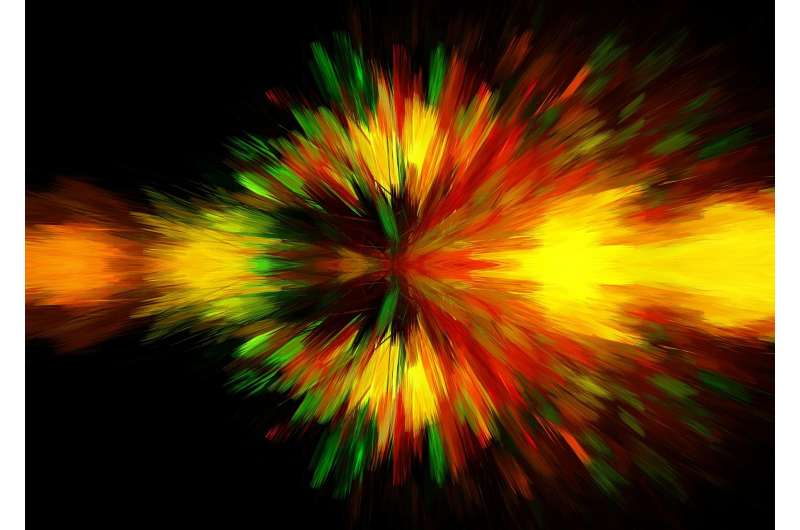New understanding of charge transport reveals an exotic quantum mechanical regime

In work that may have broad implications for the development of new materials for electronics, Caltech scientists for the first time have developed a way to predict how electrons interacting strongly with atomic motions will flow through a complex material. To do so, they relied only on principles from quantum mechanics and developed an accurate new computational method.
Studying a material called strontium titanate, postdoctoral researcher Jin-Jian Zhou and Marco Bernardi, assistant professor of applied physics and materials science, showed that charge transport near room temperature cannot be explained by standard models. In fact, it violates the Planckian limit, a quantum speed limit for how fast electrons can dissipate energy while they flow through a material at a given temperature.
Their work was published in the journal Physical Review Research on December 2.
The standard picture of charge transport is simple: electrons flowing through a solid material do not move unimpeded but instead can be knocked off course by the thermal vibrations of atoms that make up the material's crystalline lattice. As the temperature of a material changes, so too does the amount of vibration and the resulting effect of this vibration on charge transport.
Individual vibrations can be thought of as quasiparticles called phonons, which are excitations in materials that behave like individual particles, moving and bouncing around like an object. Phonons behave like the waves in the ocean, while electrons are like a boat sailing across that ocean, jostled by the waves. In some materials, the strong interaction between electrons and phonons in turn creates a new quasiparticle known as a polaron.
"The so-called polaron regime, in which electrons interact strongly with atomic motions, has been out of reach for first-principles calculations of charge transport because it requires going beyond simple perturbative approaches to treat the strong electron-phonon interaction," says Bernardi. "Using a new method, we have been able to predict both the formation and the dynamics of polarons in strontium titanate. This advance is crucial since many semiconductors and oxides of interest for future electronics and energy applications exhibit polaron effects."
Strontium titanate is known as a complex material because at different temperatures its atomic structure changes dramatically, with the crystal lattice shifting from one shape to another, which in turn shifts the phonons that electrons have to navigate. Last year, Zhou and Bernardi showed in a Physical Review Letters paper that they can describe the phonons associated with these structural phase transitions and include them in their computational workflow to accurately predict the temperature dependence of the electron mobility in strontium titanate.
Now, they have developed a new method that can describe the strong interactions between the electrons and phonons in strontium titanate. This allows them to explain the formation of polarons and accurately predict both the absolute value and the temperature dependence of the electron mobility, a key charge-transport property in materials.
In doing so, they uncovered an exotic feature of strontium titanate: charge transport near room temperature cannot be explained with the simple standard picture of electrons scattering with atomic vibrations in the material. Rather, transport occurs in a subtle quantum mechanical regime in which the electrons carry electricity collectively rather than individually, allowing them to violate the theoretical limit for charge transport.
"In strontium titanate, the usual mechanism of charge transport due to electrons scattering with phonons has been widely accepted for the last half century. However, the picture that emerges from our study is far more complicated," says Zhou. "At room temperature, it's as if roughly half of each electron contributes to charge transport through the usual phonon scattering mechanism, while the other half of the electron contributes to a collective form of transport that is not yet fully understood."
In addition to representing a fundamental advance in the understanding of charge transport, the new method by Zhou and Bernardi can be applied to many semiconductors as well as to materials such as oxides and perovskites, and to new quantum materials exhibiting polaron effects. Besides charge transport, Zhou and Bernardi plan to investigate materials with unconventional thermoelectricity (the generation of electricity from heat) and superconductivity (electric current without resistance). In these materials, existing calculations have not yet been able to take into account polaron effects.
The paper is titled "Predicting charge transport in the presence of polarons: The beyond-quasiparticle regime in SrTiO3."
More information: Jin-Jian Zhou et al. Predicting charge transport in the presence of polarons: The beyond-quasiparticle regime in SrTiO3, Physical Review Research (2019). DOI: 10.1103/PhysRevResearch.1.033138
Jin-Jian Zhou et al. Electron-Phonon Scattering in the Presence of Soft Modes and Electron Mobility in SrTiO3 Perovskite from First Principles, Physical Review Letters (2018). DOI: 10.1103/physrevlett.121.226603
Journal information: Physical Review Letters
Provided by California Institute of Technology





















